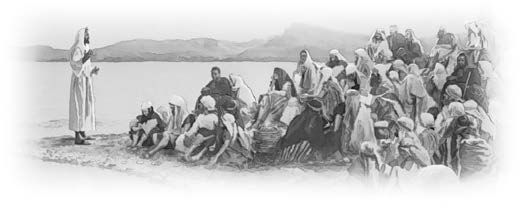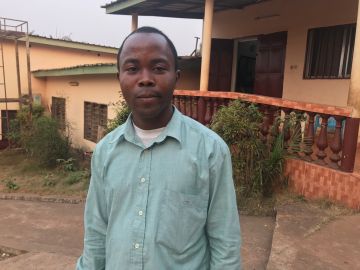Sixteen-year-old Joseph Delamou was anxious. He worried that he wasn’t attending the right church in Conakry, capital of the West African country of Guinea.
“Show me the way,” he prayed. “I’ll go wherever You lead.” That night, he had a vivid dream. He dreamed that he and 70 members of his church were on a compound, making plans on how to grow their congregation. Outside the compound loomed the palace of a mighty king, the ruler of the world.
Abruptly, a unit of soldiers burst into the compound. “You need to leave,” a soldier told Joseph. “We want to train you to join our ranks.”
Joseph didn’t want to leave, but the soldier insisted. “You can’t stay,” he said. “Leave. Go anywhere you want. Just don’t stay here. After three days, you can come back and see what has happened to these people.”
Joseph left and, returning three days later, found a very quiet compound. He wondered where everyone was. Then he saw a boy hiding behind the wall of the king’s palace. The boy was bleeding and, when Joseph tried to talk to him, put a finger to his lips.
“Come over here,” he whispered.
After Joseph drew near, the boy said, “Your God is great!”
“What?” Joseph asked.
“I said, ‘Your God is great!’ ” the boy said. “How is it that you are the only person who left us three days ago? Many of us were shot and killed, but you are the only one who escaped. How?”
Joseph pressed the boy for details, and the boy led him to a mound of dirt. He said it was the mass grave of more than 40 people. “The soldiers didn’t train anyone,” he said. “They shot people and took survivors away in cages.”
Then Joseph noticed a snake lying motionless on the ground. The boy said it was the king who had lived in the palace, and he had been slain. “Let me show you the prince who has taken over from the king,” he said.
Joseph couldn’t take his eyes off the snake. “How did a snake rule the world and call itself king?” he asked. “I don’t understand how people could accept a snake as king.”
“I can’t explain this to you right now,” the boy replied.
At that moment, Joseph woke up. He didn’t understand the dream. But he sensed God was calling him to leave the church of his father. Where should he go?
Your Thirteenth Sabbath Offering on December 30 will help spread the gospel in the West-Central Africa Division, which includes Guinea. Thank you for planning a generous offering. Read more about Joseph next week.

